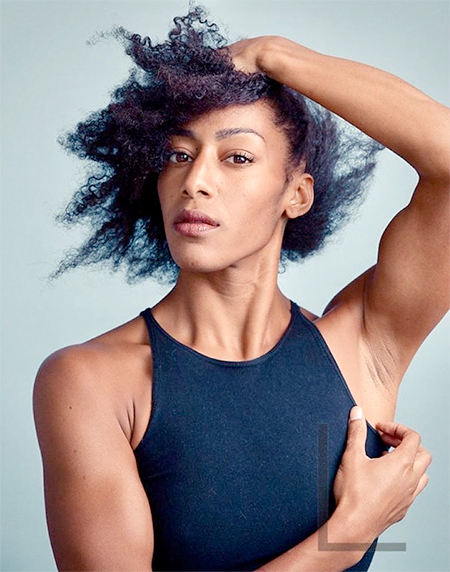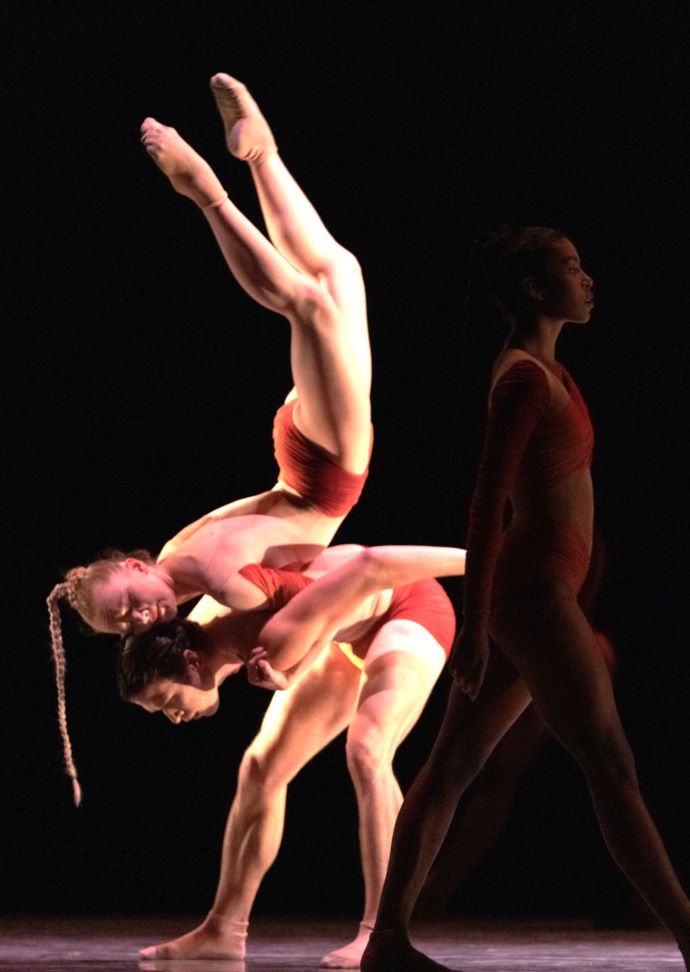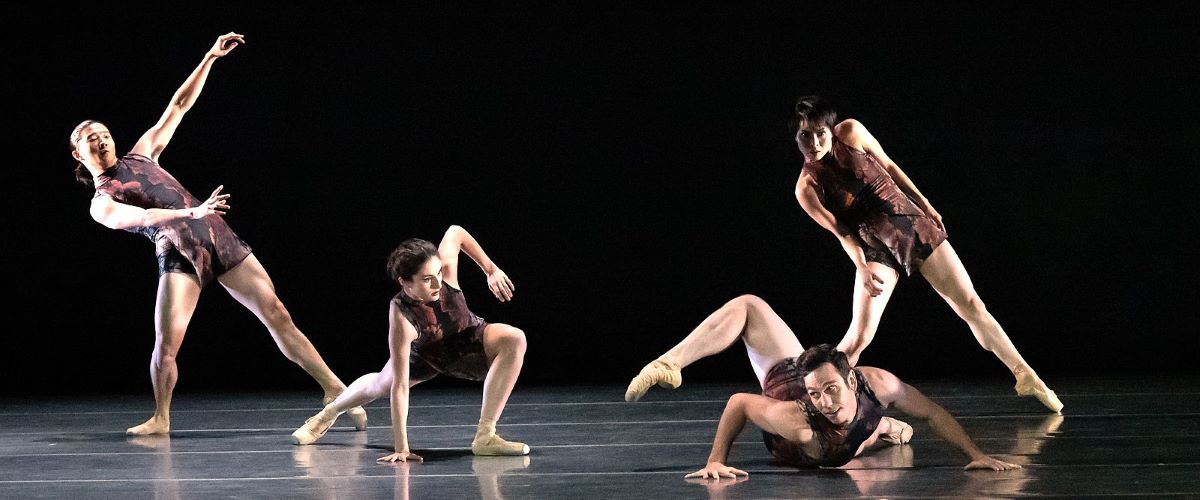Join the ICONS
Dance ICONS is a global network for choreographers of all levels of experience, nationalities, and genres. We offer a cloud-based platform for knowledge exchange, collaboration, inspiration, and debate. Dance ICONS is based in Washington, D.C., and serves choreographers the world over.
Subscribe today to receive our news and updates. Become a member of your global artistic community -- join the ICONS!
RENA BUTLER: SHAPING SPACE AND PLACE
 After leaving a successful performance career to fully focus on creating new dances, American choreographer Rena Butler and her work have been frequently appearing in theaters around the globe. Her edge and athletic movement are breaking barriers at ballet companies and in opera houses, bringing a unique movement vocabulary to stages dominated by classical ballet repertory. She spoke to ICONS about her creative interests and how she sees herself in the future of dance.
After leaving a successful performance career to fully focus on creating new dances, American choreographer Rena Butler and her work have been frequently appearing in theaters around the globe. Her edge and athletic movement are breaking barriers at ballet companies and in opera houses, bringing a unique movement vocabulary to stages dominated by classical ballet repertory. She spoke to ICONS about her creative interests and how she sees herself in the future of dance.
ICONS: Your professional performing career was, and still is, incredibly diverse. You've worked for more than eight major choreographers and dance companies, so how does that figure into your choreographic process now?
Rena Butler: I can't believe it's been eight companies and I'm hitting my mid-30s, but I'm still dancing and that feels like a blessing. There's something prominent that came from each one of those experiences.
With David Dorfman, it was the fundamentals of postmodern dance, how to stand in neutral space and play with space, how to shift my weight, counter-pull versus counter-balance. With Kyle Abraham it was about moving with particular energy and how to shift that energy. Bill T. Jones was very methodical and ritualistic in his building of work, so I learned more as a choreographer rather than a dancer dancing for Bill T. Jones.
When I went to Hubbard Street, I really opened up as a dance and choreographic artist. They were the first company to promote me as a choreographer; I became their third choreographic fellow and it was an incredible experience because I was able to vary my vocabulary as a dancer and artist by trying on lots of different choreographers.
I have also worked with Crystal Pite, Bill Forsythe, Nacho Duato, Ohad Naharin, Alejandro Cerrudo, Robyn Mineko Williams, Peter Chu, Emma Portner. It was a beautiful harmonization of marrying my dancer self and choreographic self. When I got to Gibney, it was more about dance through advocacy. That was starting to build with Hubbard Street. When I joined the Gibney Company there was a promise to marry dance with advocacy. That pretty much fell wayside in my second and last season there. I had gone there for a very specific reason, and when that reason was no longer applicable, I felt comfortable enough to try freelance.
 ICONS: You choreographed for companies while you were still dancing for them. How does that impact your choreographic process?
ICONS: You choreographed for companies while you were still dancing for them. How does that impact your choreographic process?
RB: I work well under pressure; I'm very calm. I love to have multiple things going on at once, and that's still true in my life today. Reflecting on that time, it was definitely a social thing, trying to figure out my place in the company that for a set of hours, I'm one role, and for another set of hours, I'm another. Finding that balance professionally and socially amongst my peers was interesting. Wearing those different hats and knowing when to step up, take the space in one way, but then on the other side, be quiet and receive. It prepared me to be able to hold a lot and to direct a lot.
ICONS: What was creating on Dutch National Ballet -- one of the major European houses of classical ballet -- in contrast to the contemporary dancers that you work with?
RB: Creating on Dutch National Ballet was an absolute dream, very intimidating at first, but it became one of the most surreal and beautiful choreographic experiences I've had. Oftentimes in the States when I'm hired, I wonder if I'm just a checkbox of Black female choreographers, and I'm wary of how I pick my commissions due to that.
I've had directors say to my face: I know the Black thing is in so we would love to have you. Clearly, that's not the way you invite an artist to create on your dancers. What I loved about Ted Brandsen was that he took time to get to know me. Having a director really invest in me before my arrival to make sure that I can do my best work and enjoy myself doing it is very special. I wish more directors would take that lead. I was alongside three major hitters of Europe and my work could stand alongside their greatness.
The gravity of that relationship and then being encouraged by Ted and the Dutch National Ballet with a lot of publicity, and it was not just checking a box. The Dutch were naturally curious, and it felt organic. Also, standing below the marquee and seeing my name alongside Ted Brandsen, Hans Van Manen, William Forsythe… I mean, what more could a girl want!?
ICONS: You have been dabbling in opera lately. What are the advantages and challenges of that type of choreography?
RB: I love the opera, and I love creating an opera, and I love its opulence. Operas always have a very large budget to support the vision of the director. Highlighting it and decorating it with my own set of dance skills without budgetary constrictions is phenomenal. The sky's the limit, and that's what I love about opera!
Another advantage is reminding myself how to read sheet music again. I think that's a strength as a choreographer, not only to be able to press play on a boom box, but also to be able to go back and organize your choreography through a musical score. I had to polish up when stepping into opera for the first time.
I feel very honored to be able to put in the work somewhere and have that be noticed by someone who's a frequent director and producer of opera. Matthew Ozawa, thank you so much! I am sort of apprenticing with him because he has a hefty job producing at the Lyric Opera in Chicago. He often calls on me to lead the room when he needs to step out to take a meeting. I'm really getting my hands and feet wet in it and I'm loving it so much.
ICONS: What is your least and most favorite part of being a freelance choreographer?
RB: My least favorite part is the constant self-promotion, trying to remain relevant and show people that you're capable. With networking, there are only so many hours in a day; there's not really an off switch.
I’m in a strange career position right now because I feel like I'm just above emerging and just below established choreographer. And it seems a lot of directors or producers overlook that phase of an artist's life. There's this big pivot in my life right now: I am feeling that concert dance is constantly pushing, especially where we are in society losing a lot of funding for the arts.
I do believe in myself, but I'm wondering if people believe in me, too. This art form sometimes doesn't really show love back or it takes a minute. All I can do is really be patient. I also hope to transition more towards fashionable houses, films, and TV. I think of meeting concert dance with opera in a different type of way, and I would like that kind of work. I believe moving in that commercial direction will offer me more work-life balance.
Another favorite part of it is that I've always loved traveling. My passport has stamps from more than 60 countries right now and I want to keep that number growing and most of it is due to work. I get to meet people, make connections, learn from the spaces that I'm in and keep what I learned from the previous opportunity.
ICONS: When Dance ICONS spoke to David Parsons, he raved about your work. You’re about to premiere a second back-to-back new dance for Parsons Dance, so why would an artistic director want you again so quickly?
RB: I've been blessed to have a dance career that has been literally all across the board, every style you can think of; I've dabbled in a lot of different vernaculars of dance. And I think that finds its way into my work and I've made my own language with that. As I build work and find my own language, you can't quite see what it looks like but you can feel it. It's entirely just Rena. It's slick, sleek. It has muscle and grit and bite.
ICONS: What are you working on now that you can share with us, or do you have any upcoming premieres?
RB: For premieres, Salt Contemporary Dance is coming later this month. A.I.M. at the Joyce Theater is having a New York City premiere of my work. After that is a premiere with Parson's Dance on May 13, 2025. All the while I'll be in France working with Arles Youth Ballet and then premiering a piece with Ballet D’Avignon. And after that, I go straight to Seattle to finish my piece and premiere my piece with Pacific Northwest Ballet. And then later this summer I’ll be making my first piece for Ailey II.

ICONS: Since you won the Princess Grace Award, you’ve been able to consistently work, so what advice would you pass along to aspiring choreographers who look up to you?
RB: Define success because my definition of success right now is work/life balance, and I’m still working at that. How can we be gentle with ourselves cultivating what stability and success look like? That’s important when you are busy and asked to hold so much and meet so many people. How can we create balance, and how do you define the balance of success for you?

* * * * * * *
BIOGRAPHICAL INFORMATION: https://www.renabutler.com/
PHOTOS: © Dutch National Ballet © Hubbard Street Dance Chicago © Hiromi Platt © Cory Weaver © Jingzi Zhao © Yi Yin
VIDEO TRAILER:
INTERVIEW'S CREATIVE TEAM ACKNOWLEDGMENTS:
Interviewer: Charles Scheland
Executive Content Editor: Camilla Acquista
Executive Assistant: Charles Scheland
Founding and Executive Director: Vladimir Angelov
Dance ICONS, Inc., May 2025 © All rights reserved
This digital resource and publication made possible with funding by
![]()


